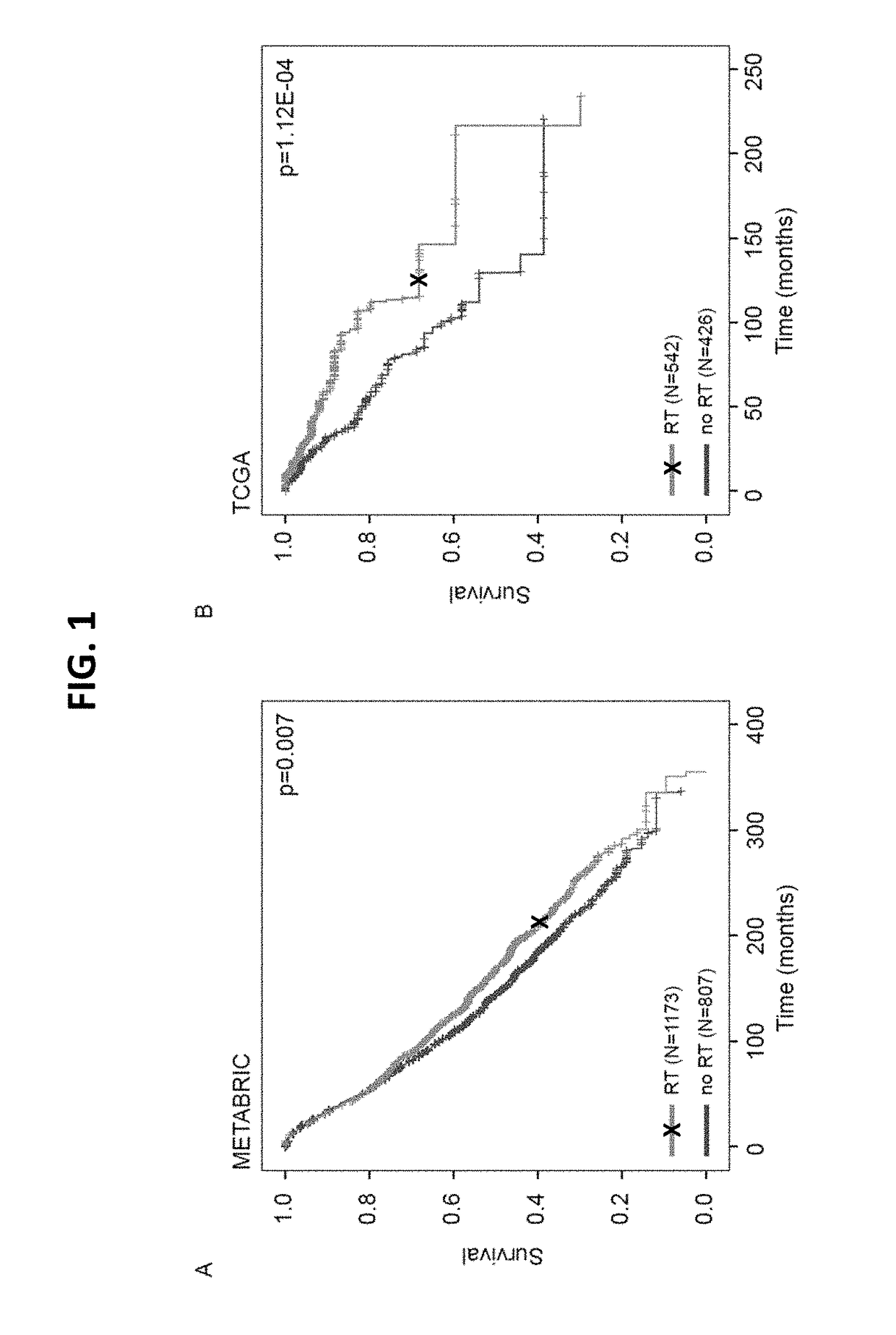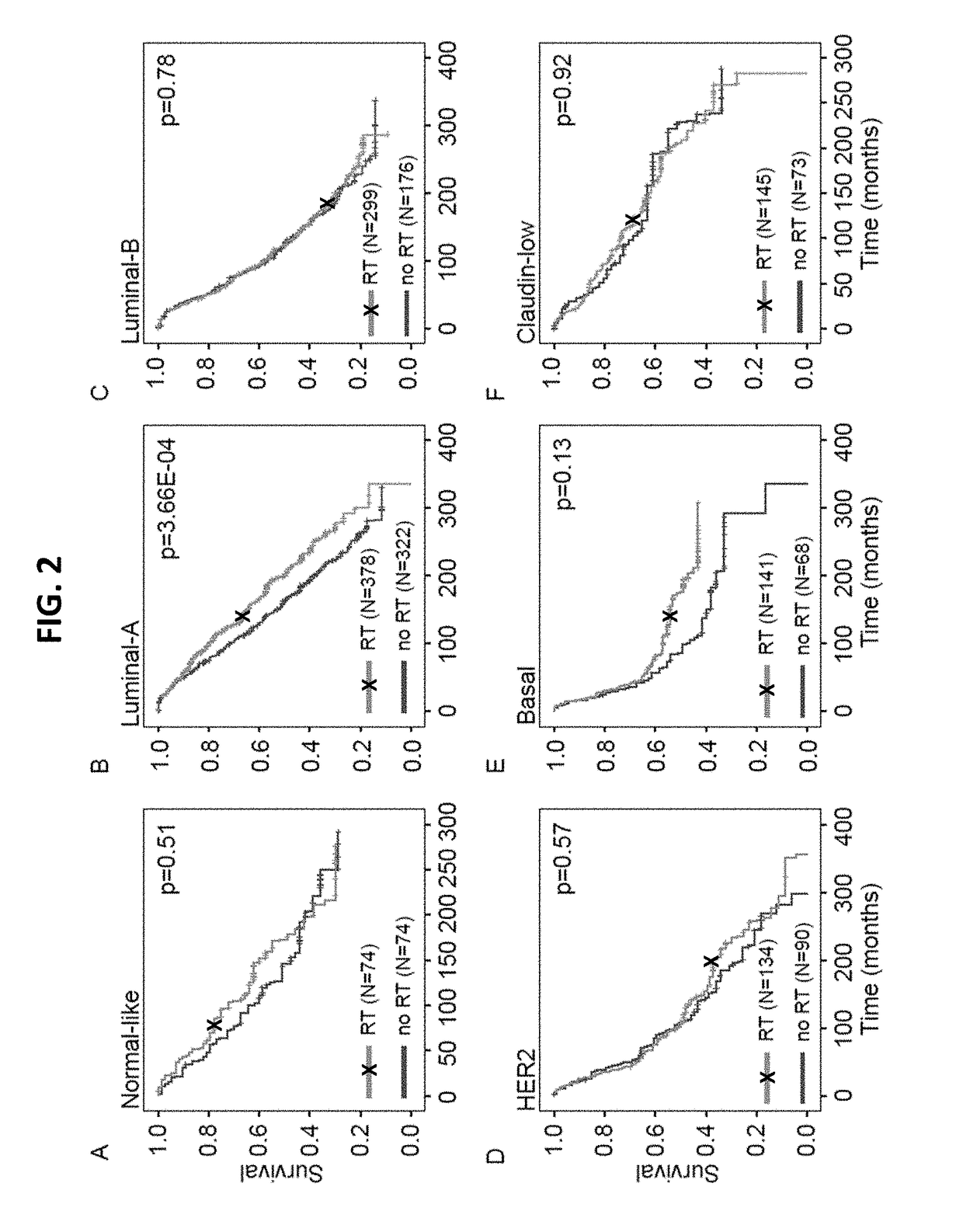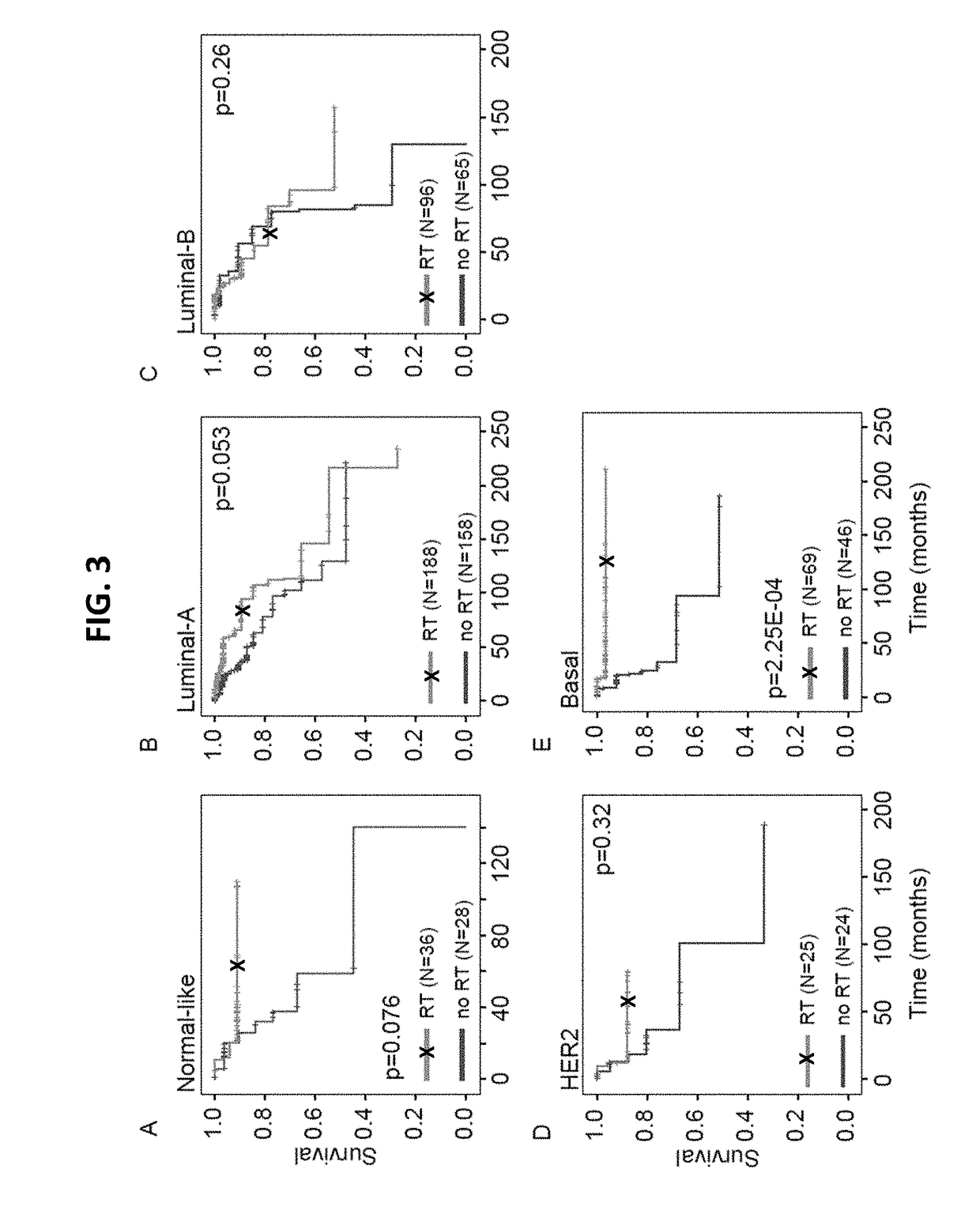Methods of Producing Gene Expression Profiles of Subjects Having Cancer and Kits for Practicing Same
a technology of gene expression profiles and kits, applied in the field of producing gene expression profiles of subjects having cancer and kits for practicing same, can solve the problems of separating patients who benefit from radiotherapy, not all patients who receive radiotherapy benefit, and radiotherapy remains challenging
- Summary
- Abstract
- Description
- Claims
- Application Information
AI Technical Summary
Benefits of technology
Problems solved by technology
Method used
Image
Examples
example 1
apy Improves Overall Survival in Breast Cancer Patients
[0053]Evidence has shown that radiotherapy after BC surgery leads to increased patient survival. To further validate this observation, two large BC patient cohorts (METABRIC and TCGA) were used, which contain clinical data including radiotherapy, molecular subtype, age, overall survival (OS) and other patient characteristics. The demographic differences between patients that received radiotherapy versus those that did not were first investigated using the METABRIC data (Table 1). A higher proportion of young patients, and patients with high grade and late stage tumors received radiotherapy (Table 1). Overall we found that patients who receive radiotherapy survive significantly longer compared to those who did not receive radiotherapy in both datasets (FIG. 1; METABRIC: p-value=0.007; TCGA: p-value=1.12E-04).
TABLE 1Distribution of clinical characteristicsof METABRIC breast cancer cohorts.Radiotherapynoyesp-valueAge (mean + / − st. ...
example 2
Radiotherapy on Patient Survival is Independent of Clinical Factors
[0054]To determine if the impact of radiotherapy on patient survival was independent of age at diagnosis, tumor size, chemotherapy, hormone therapy, estrogen- and progesterone-receptor status, tumor grade and molecular subtype (as determined by Pam50), multivariate Cox regression with these factors including radiotherapy as covariates was used. In multivariate analysis the difference of OS attributable to radiotherapy remained significant (HR=0.811: 95% CI: 0.714-0.922; p=1.39E-03). Also found was that age, tumor size, chemotherapy, ER status, tumor grade, PAM50 subtype were significantly associated with OS (Table 2). Surprisingly, the hazard ratio for chemotherapy was 1.851 (95% CI:1.522-2.251; p=7.1E-10) suggesting that chemotherapy does not confer a survival benefit in this population based study.
TABLE 2Prognosis Factors in Multivariate Analyses.HazardRatio95% CI for HRFactorsp-value(HR)LowerUpperRadiotherapy1.389...
example 3
Subtype-Specific Impact of Radiotherapy on Patient Survival
[0055]BC is a heterogeneous disease and gene expression signatures have been developed that classify breast tumors into six different molecular subtypes (normal-like, luminal A, luminal B, HER2, basal and claudin-low). See Perou et al. (2000) Nature 406:747-752; Prat & Perou (2011) Molecular Oncology 5:5-23; Prat et al. (2012) Breast Cancer Research and Treatment 135:301-306; and Prat et al. (2010) Breast Cancer Research 12:R68. Studies have demonstrated an association between molecular subtype and patient prognosis. The basal and HER2 subtypes are generally more aggressive and associated with poorer survival compared to normal-like and luminal breast tumors. To investigate whether radiotherapy benefits patients equally among different molecular subtypes, the patient cohorts were stratified into different molecular subtypes based on the PAM50 molecular score (see Parker et al. (2009) Journal of Clinical Oncology 27:1160-1167...
PUM
| Property | Measurement | Unit |
|---|---|---|
| time | aaaaa | aaaaa |
| nucleic acid | aaaaa | aaaaa |
| size | aaaaa | aaaaa |
Abstract
Description
Claims
Application Information
 Login to View More
Login to View More - R&D
- Intellectual Property
- Life Sciences
- Materials
- Tech Scout
- Unparalleled Data Quality
- Higher Quality Content
- 60% Fewer Hallucinations
Browse by: Latest US Patents, China's latest patents, Technical Efficacy Thesaurus, Application Domain, Technology Topic, Popular Technical Reports.
© 2025 PatSnap. All rights reserved.Legal|Privacy policy|Modern Slavery Act Transparency Statement|Sitemap|About US| Contact US: help@patsnap.com



